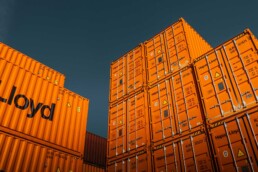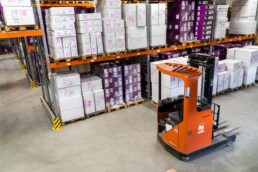US Shoppers Brace For China Package Fees
US shoppers are increasingly facing unexpected challenges when ordering products from overseas, particularly from China. Rising import costs and new regulatory measures have introduced what many refer to as “China Package Fees.” These additional charges are affecting consumer spending and disrupting international shipping and fulfillment processes. As businesses scramble to adapt, the entire logistics ecosystem undergoes significant changes. In this blog, we explore the origins of these fees, analyze their far-reaching implications, and examine how supply chain management experts respond. We also review trends in order fulfillment solutions, e-commerce fulfillment, and advanced inventory management techniques essential in today’s competitive market.
Rise of China Package Fees and Their Impact on Consumers

Understanding the New Fee Structure
Over recent months, policy changes and tariff adjustments have led to significant charges on packages from China. Firstly, third-party logistics (3PL) providers updated their processes to meet stricter customs regulations and enhanced customs brokerage practices. Furthermore, fulfillment services have experienced increased processing fees, while warehousing and distribution centers reassess cost structures. Consequently, order fulfillment solutions face pressure as e-commerce fulfillment operations struggle with profitability. In addition, inventory management and shipping and delivery systems are being revamped to meet updated standards. Businesses must now navigate complex supply chain management challenges, including last-mile delivery, cross-docking, and freight forwarding procedures. Ultimately, the traditional model of international shipping is evolving under the weight of escalating China Package Fees—truly transformative.
Real-Life Implications for Shoppers

American consumers have felt the impact of these fees firsthand. Many shoppers report that additional charges sometimes exceed the cost of the items they purchase. Moreover, small businesses relying on vendor-managed inventory (VMI) and dropshipping solutions face increased financial strain. Unexpected fees often result in order cancellations or returns, which complicate reverse logistics and disrupt order tracking and management systems. Consequently, companies are investing in same-day and next-day delivery options to mitigate delays, while exploring freight consolidation and value-added services (VAS) to reduce expenses. As a result, both consumers and businesses are rethinking their approaches to international shipping and import/export. This shift has made the challenge of China Package Fees more acute and unavoidable. These rising fees continue to pressure market strategies and consumer confidence, undeniably challenging for all parties.
Challenges in Global Shipping and Fulfillment
Complexities in Supply Chain Management

Today’s international shipping landscape is marked by increased complexity and rising costs. Businesses confront challenges managing both outbound and inbound logistics, especially with the burden of China Package Fees. Moreover, companies are adopting advanced inventory tracking software and implementing safety and security measures in warehousing to mitigate risks. Additionally, robust 3PL technology solutions along with strategic carrier selection and management practices are streamlining operations. Packaging optimization and freight rate negotiation have become essential for lowering expenses. Furthermore, freight audit and payment services are under review to ensure shipments meet strict order fulfillment metrics and reporting standards. Overall, supply chain optimization has evolved into a critical necessity. Organizations must also consider bulk shipping and comply with international shipping and import/export regulations to stay competitive, ensuring sustained growth in a volatile market.
The Role of Fulfillment and Inventory Management

As global logistics challenges intensify, efficient fulfillment and inventory management have become indispensable. Retailers are increasingly investing in e-commerce integration services and cloud-based warehouse management systems (WMS) to maintain high order accuracy and quality control. Furthermore, innovations such as shipment consolidation, demand planning, and streamlined outbound and inbound logistics are prioritized to meet evolving customer expectations. Advanced order splitting and routing, along with return merchandise authorization (RMA) processing, are critical for ensuring on-time delivery. In addition, scalable fulfillment solutions and regular inventory cycle counts help streamline operations.
Notably, businesses that integrate same-day and next-day delivery systems with comprehensive order tracking and management can better address the rising costs imposed by China Package Fees. Consequently, incorporating fulfillment cost analysis and FBA strategies is essential for sustainable growth in a challenging economic environment. This proactive approach drives remarkable efficiency and long-term profitability.
The surge in China Package Fees has disrupted traditional international shipping. It is essential for consumers and businesses to adopt innovative strategies and embrace modern technologies. Focusing on supply chain optimization, enhanced order fulfillment solutions, and robust inventory management can mitigate these extra costs. Leveraging advanced logistics tools and systems is critical in adjusting to an evolving market. Ultimately, proactive adaptation secures a future competitive advantage and sustained growth, ensuring long-term, consistent success in today’s extremely volatile economy.
As we move forward, it is evident that the global marketplace remains in constant flux. US shoppers and businesses must remain agile, adopting advanced logistics strategies such as reverse logistics, freight forwarding, and cross-docking alongside conventional shipping methods. The persistent rise of China Package Fees is driving industry-wide transformation. Through continuous adaptation and strategic investment in cutting-edge technology, organizations can turn these challenges into opportunities for efficiency and profitability, ultimately securing a competitive edge.
Beginner’s Guide to Third-Party Logistics (3PL)
The world of e-commerce is always changing, therefore understanding the roll of Third-Party Logistics is integral to keeping up. In light of this our beginner’s guide to third-party logistics (3PL) will delve into the essential aspects, offering insights into fulfillment services, warehousing, and much more.
Read More…
By embracing these transformative changes, companies not only protect profit margins but also enhance customer satisfaction. It is vital to prioritize comprehensive order tracking and management, scalable fulfillment solutions, and precise inventory forecasting while investing in warehouse automation and strategic carrier selection and management. Addressing the challenges of China Package Fees through such innovative measures paves the way for a more efficient, profitable, and resilient global supply chain. Unified efforts will ensure long-term success in international trade with certainty.





